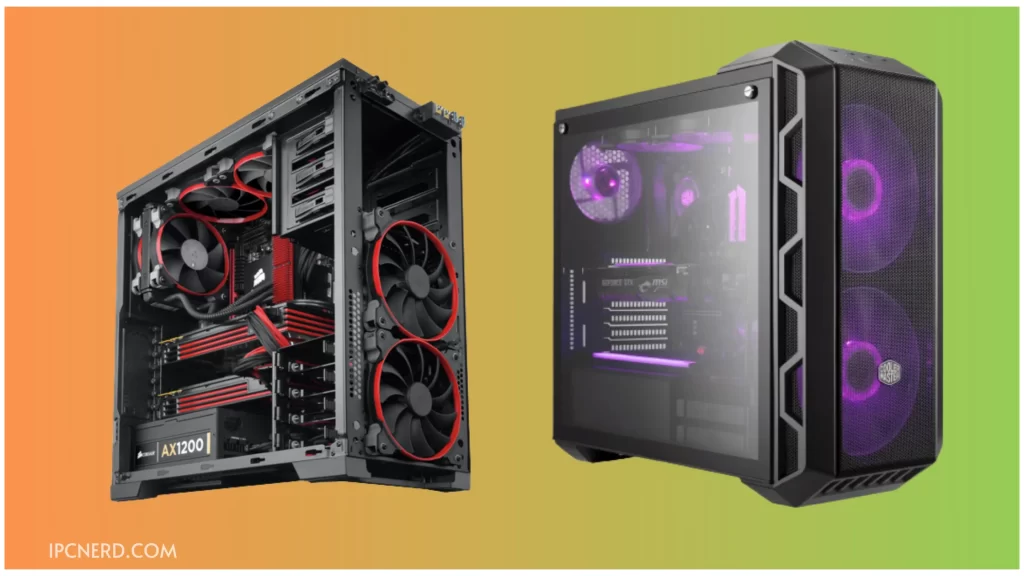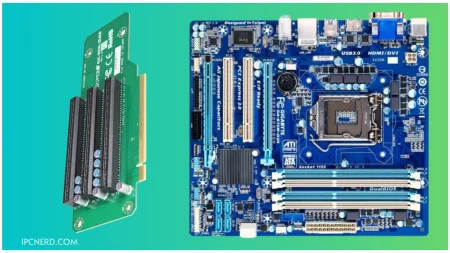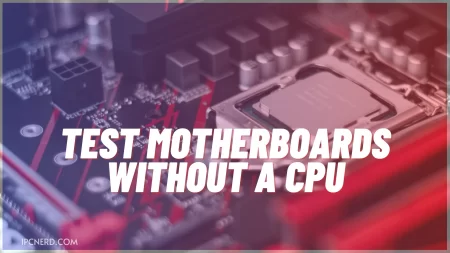If you have a computer, you know that it is always dusty. Dust can make your keyboard difficult to type on, slow your computer’s performance, and potentially cause damage to vital components.

That’s why it is important to clean your computer case regularly. If you’re looking for great ways to clean your PC cases, here are three methods that will do the trick!
- Why is Cleaning Important?
- How to Clean a Computer Case
- How to Protect Your Computer Cases
- Tips for Safer Cleansing Procedures
- Materials You Will Need
- Steps for the Best Results
- What are the Benefits of Clean Computer Cases
- Your Computer Will Perform Better
- Your Cases Will Look Nicer
- You’ll Save Money on Repairs Later on
- Frequently Asked Questions
- Conclusion
Why is Cleaning Important?
Cleaning your computer cases is important to keeping your computer in good condition. Regular cleaning will help remove dust and other particles that can cause problems with the PC’s performance, but it will also help keep the internals of the case looking clean and new.
When cleaning a computer case, use a soft, lint-free cloth and avoid harsh chemicals or abrasives. If you encounter any dirt or grime that seems difficult to remove, try using a solution of water and white vinegar (1:1 ratio) to clean the area.
Be sure to rinse off the area thoroughly before continuing with your regular cleaning routine.
By following these simple tips, you can keep your computer cases looking their best and ensure maximum performance from your machine.
How to Clean a Computer Case
If you have cleaned your computer cases, you know it can be time-consuming and tedious. You may have also needed help finding the right cleaning products or techniques to get the job done. This article will show you how to clean a computer case using simple, effective methods.
First, use a vacuum cleaner with a hose attachment to remove all the dust and debris from the case. Make sure to vacuum both the top and bottom of the case.
Next, use a microfiber cloth or soft brush to clean any dust or residue inside the case. Lastly, use a mild soap solution and water to clean any dirt or grease on the case’s exterior.
How to Protect Your Computer Cases
There are a few different ways to protect your computer cases.
One way is to use a dust cover. This small, circular plastic attaches to the front of your computer case and covers the fan and power supply. When it’s not in use, you can store the dust cover on top of your computer.
Another way to protect your computer is to use a stand. This is a rectangle-shaped piece of plastic or metal that attaches to the bottom of your computer case and holds it up off the ground. You can store the stand on top of your computer when it’s not in use.
You can also buy a fan guard. This extra protection for your fans comes in different shapes and sizes. It attaches to the front or back of your computer case, and it separates your fans from other parts of your computer.
Tips for Safer Cleansing Procedures
When cleaning your computer cases, a few tips can help make the process safer and easier.
- Always use caution when using any cleaning agent or abrasive material. Large amounts of pressure can cause cuts or injuries if not used properly.
- Use a damp cloth or sponge instead of water or a cleaning agent to clean the surface. Dampen the cloth or sponge before applying pressure, and then wipe away residue gently with a dry cloth or paper towel.
- Avoid using harsh chemicals when cleaning your computer cases. They can damage the finish and leave behind residues that can be difficult to remove later. In most cases, mild soap and water will do just fine.
- Be sure to store your computer cases in a clean and dust-free environment when not in use. This will help free them from harmful particles and debris that could damage them over time.
Materials You Will Need
Materials You Will Need:
- A vacuum cleaner with a hose attachment
- A dust cloth
- An oven or stove
- Clean water
- Anti-static spray
- Outdoor furniture cushions (optional)
- Vacuum your computer cases and the surrounding area. Use the hose attachment on your vacuum cleaner to remove dust, lint, or other debris. Be sure to clean all of the crevices and corners of your cases.
- Wet a dust cloth to clean the insides of your computer cases. Make sure to get inside all the tiny nooks and crannies. Wipe off any excess moisture, then repeat steps 1 and 2 for the surrounding area.
- Preheat your oven or stove to 200 degrees Fahrenheit (93 degrees Celsius). Spray an anti-static spray over the entire case before placing it in the oven or stove. Bake or cook for 5 minutes, then remove from heat and allow to cool completely before handling.
- If you’re using outdoor furniture cushions, place them over the exposed parts of your computer case while it’s in the oven or stove–this will help protect it from scratches.
Steps for the Best Results
When it comes to keeping your computer clean, the cases are just as important as the computers themselves. Here are a few easy steps for the best results:
- Remove all removable media and cables.
- Use a vacuum cleaner with a hose attachment to remove any dust or debris inside the computer case.
- Wipe down the exterior of the case with a dry cloth.
- Use a degreaser to clean any grease or oil buildup on the case’s exterior.
- Apply a light coat of protective coating to the case’s exterior if desired.
What are the Benefits of Clean Computer Cases
There are a variety of benefits to keeping your computer cases clean. Not only will it look nicer, but it will also improve the overall performance of your computer. Here are just some of the benefits:
Your Computer Will Perform Better
One of the biggest benefits of keeping your computer cases clean is that it will improve the overall performance of your computer. Dirt and dust build up over time on the inside surfaces of a computer case, which can cause problems with cooling and airflow.
This can lead to decreased performance and even overheating. By cleaning your computer cases regularly, you can prevent these issues from happening and keep your machine running at its best.
Your Cases Will Look Nicer
Another benefit of keeping your computer cases clean is that they look nicer. Dirty cases can become scratched or scuffed easily, which looks bad and makes them less resistant to damage. By cleaning them regularly, you can keep them looking new and in good condition.
You’ll Save Money on Repairs Later on
Keeping your computer cases clean can also save you money for repairs. If dirt and dust are not allowed to build up over time, there is less chance that something will break when you try to start your machine.
This means fewer trips to the repair shop and quicker turnaround times when you need service!
Frequently Asked Questions
What are the best ways to clean my computer cases?
There are a few different ways to clean your computer cases, but the most popular way is to use a can of compressed air. You can also use a vacuum cleaner and a cloth rag. Make sure to avoid using water or abrasive cleaners in your cases, as this could damage them.
How do I clean the inside of my computer case?
There is no specific way to clean the inside of your computer case, but you can use a cloth rag and a vacuum cleaner. Make sure to avoid using water or any abrasive cleaners on the inside of your computer case, as this could damage it.
Conclusion
It can be tough to keep your computer cases clean, but with a little bit of effort, it’s easy to get them looking like new.
This article has shown you how to clean your computer case using different methods and products. We hope this guide has helped you keep your computer cases looking spick and span and ready for whatever comes next!







